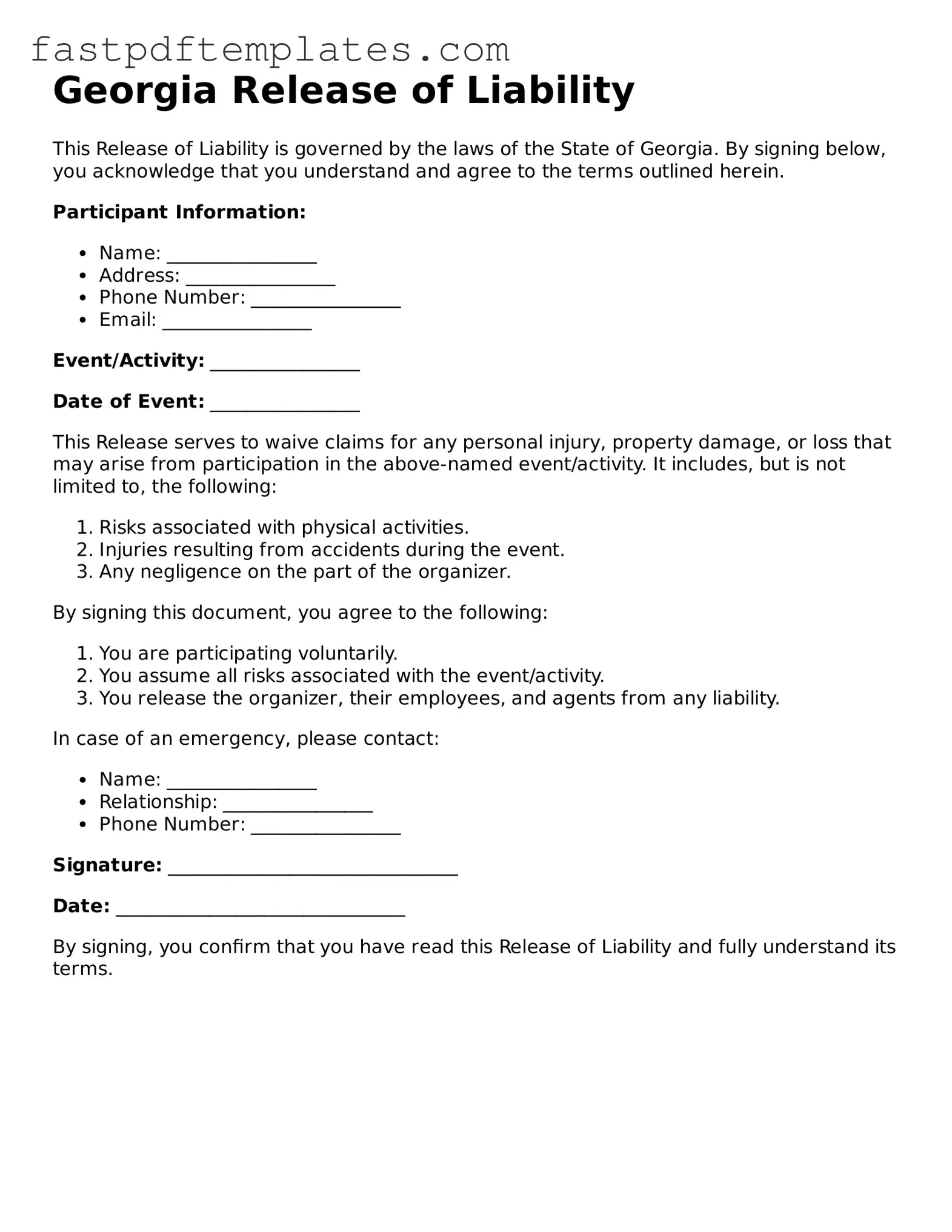Georgia Release of Liability
This Release of Liability is governed by the laws of the State of Georgia. By signing below, you acknowledge that you understand and agree to the terms outlined herein.
Participant Information:
- Name: ________________
- Address: ________________
- Phone Number: ________________
- Email: ________________
Event/Activity: ________________
Date of Event: ________________
This Release serves to waive claims for any personal injury, property damage, or loss that may arise from participation in the above-named event/activity. It includes, but is not limited to, the following:
- Risks associated with physical activities.
- Injuries resulting from accidents during the event.
- Any negligence on the part of the organizer.
By signing this document, you agree to the following:
- You are participating voluntarily.
- You assume all risks associated with the event/activity.
- You release the organizer, their employees, and agents from any liability.
In case of an emergency, please contact:
- Name: ________________
- Relationship: ________________
- Phone Number: ________________
Signature: _______________________________
Date: _______________________________
By signing, you confirm that you have read this Release of Liability and fully understand its terms.
